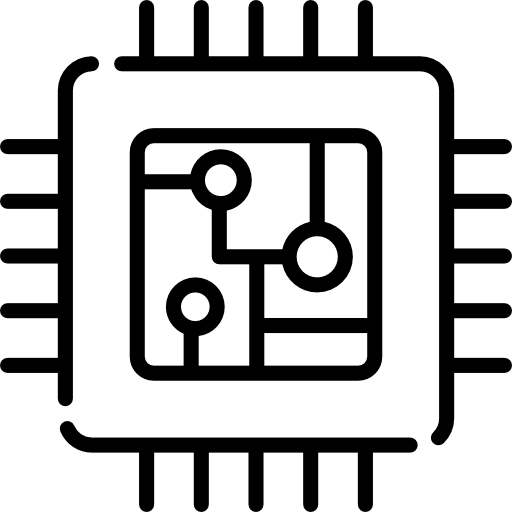PDF Hands-On Python Natural Language Processing by Aman Kedia eBook
Using Natural Language Processing for the analysis of global supply chains
NLP models can automate menial tasks such as answering customer queries and translating texts, thereby reducing the need for administrative workers. Chunking refers to the process of identifying and extracting phrases from text data. Similar to tokenization (separating sentences into individual words), chunking separates entire phrases as a single word. For example, “North America” is treated as a single word rather than separating them into “North” and “America”. Text-to-speech is the reverse of ASR and involves converting text data into audio.
Google utilises this technology to provide you with the best possible results. With the introduction of BERT in 2019, Google has considerably improved intent detection and context. This is especially useful for voice search, as the queries entered that way are usually far more conversational and natural.
Explore tools and techniques to analyze and process text with a view to building real-world NLP applications
As a result, the data science community has built a comprehensive NLP ecosystem that allows anyone to build NLP models at the comfort of their homes. Best of all, our centralized media database allows you to do everything in one dashboard – transcribing, uploading media, text and sentiment analysis, extracting key insights, exporting as various file types, and so on. Then, Speak automatically visualizes all those key insights in the form of word clouds, keyword count scores, and sentiment charts (as shown above). You can even search for specific moments in your transcripts easily with our intuitive search bar.
What Is a Large Language Model (LLM)? – Investopedia
What Is a Large Language Model (LLM)?.
Posted: Fri, 15 Sep 2023 14:21:20 GMT [source]
Here are a few popular deep neural network architectures that have become the status quo in NLP. Deep learning refers to the branch of machine learning that is based on artificial neural network architectures. The ideas behind neural networks are inspired by neurons in the human brain and how they interact with one another. In the past decade, deep learning–based neural architectures have been used to successfully improve the performance of various intelligent applications, such as image and speech recognition and machine translation. This has resulted in a proliferation of deep learning–based solutions in industry, including in NLP applications. NLP is important because it helps resolve ambiguity in language and adds useful numeric structure to the data for many downstream applications, such as speech recognition or text analytics.
See how CustomerXM works
We also discussed how NLP is applied in the real world, some of its challenges and different tasks, and the role of ML and DL in NLP. This chapter was meant to give you a baseline of knowledge that we’ll build on throughout the book. The next two chapters (Chapters 2 and
3) will introduce you to some of the foundational steps necessary for building NLP applications. Chapters 4–7 focus on core NLP tasks along with industrial use cases that can be solved with them. In Chapters 8–10, we discuss how NLP is used across different industry verticals such as e-commerce, healthcare, finance, etc. Chapter 11 brings everything together and discusses what it takes to build end-to-end NLP applications in terms of design, development, testing, and deployment.
Although simple compared to human languages, high-level languages are more complex than low-level languages. At the same time, a high-level language affords more readability in comparison to its low-level counterpart, which needs specialist knowledge in computer architecture to interpret. During his investigations, he used an unsupervised machine learning method called skip-thoughts to cluster similar sentences and select the most representative ones for each cluster. The method is based on a word-level skip-gram approach but extended to sentences. It results in a small number of sentences that best represent the whole document. As well as unsupervised machine learning, supervised techniques are also used for NLP.
Common tasks of natural language processing
Document classifiers can also be used to classify documents by the topics they mention (for example, as sports, finance, politics, etc.). Nowadays, end-to-end neural network-based models have been developed to start with raw sentences and directly learn to classify them into positive and negative. These methods do not rely on any intermediate steps and instead leverage large labelled datasets and learn intermediate representations and sentiment scores directly. These models are particularly useful in areas such as social media analysis, where dependency parsing is tricky. An end-to-end neural network is the fourth and (perhaps) final iteration of our sentiment model. This chapter aims to give a quick primer of what NLP is before we start delving deeper into how to implement NLP-based solutions for different application scenarios.
So, this book starts with fundamental aspects of various NLP tasks and how we can solve them using techniques ranging from rule-based systems to DL models. We emphasize the data requirements and model-building pipeline, not just the technical examples of natural languages details of individual models. Given the rapid advances in this area, we anticipate that newer DL models will come in the future to advance the state of the art but that the fundamentals of NLP tasks will not change substantially.
It contains a lot of state-of-the-art models for several different problems. Using NLTK we can easily process texts and understand textual data better. Natural Language is also ambiguous, the same combination of words can also have different meanings, and sometimes interpreting the context can become difficult. Natural Language Processing is considered more challenging than other data science domains.
This is when an algorithm predicts a label for new data based on some data that’s already been labelled by humans with specialist knowledge. Indeed, these ideas have been the foundation of many of the recent state of-the-art results in modern NLP. Word embeddings are a form of text representation in some vector https://www.metadialog.com/ space that allows automatic distinguishing of words with closer and further meaning by analysing their co-occurrence in some context. There are plenty of popular solutions, some of which have become a kind of classic. In the context of low-resource NLP, there are two serious issues with those models.
Sample of NLP Preprocessing Techniques
None of the information on this website is investment or financial advice. The European Business Review is not responsible for any financial losses sustained by acting on information examples of natural languages provided on this website by its authors or clients. No reviews should be taken at face value, always conduct your research before making financial commitments.
What is organic language?
The metaphor “organic” language learning refers to learning that is natural, without being forced or contrived, and without artificial characteristics.






